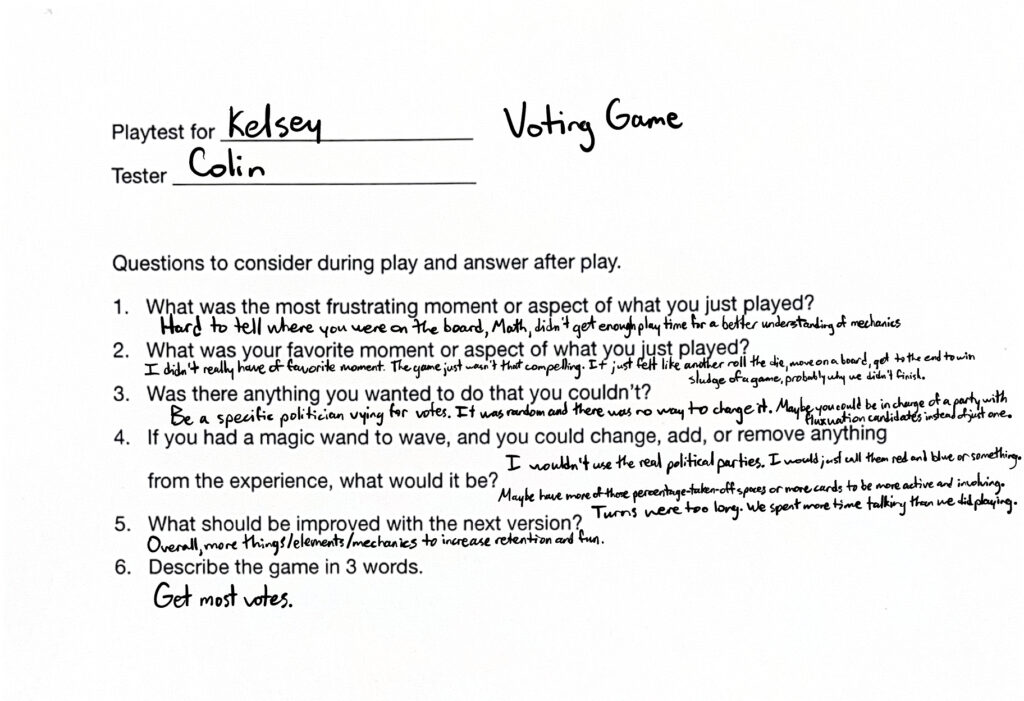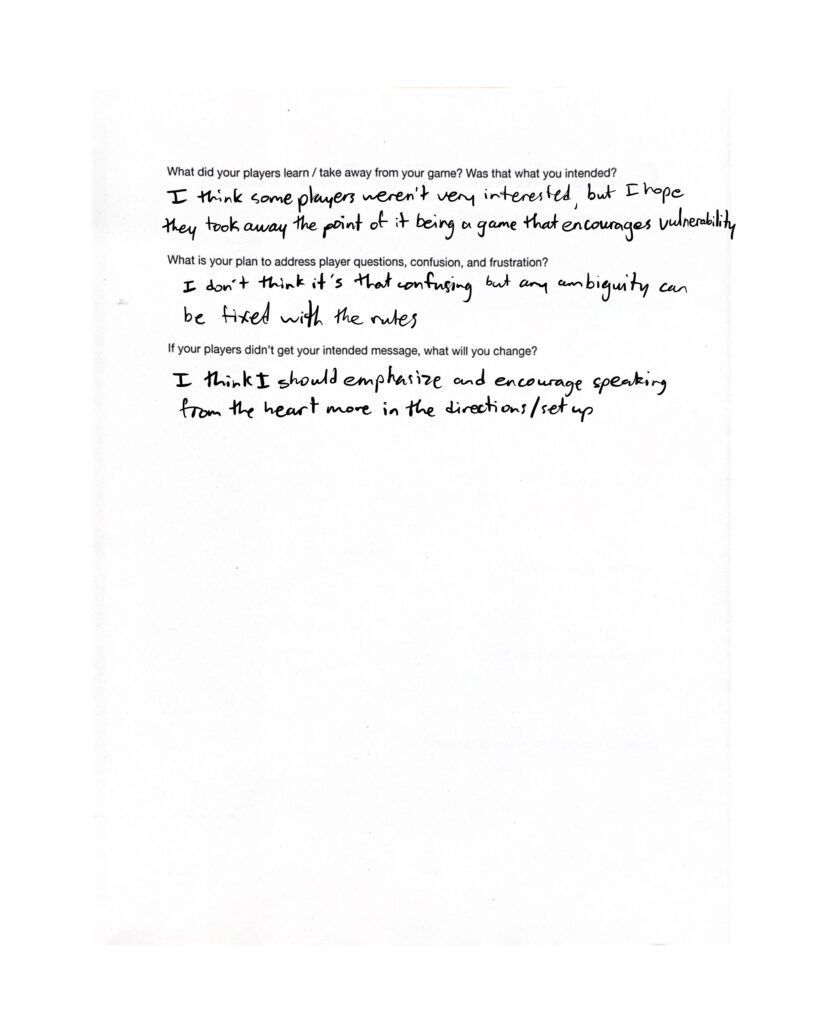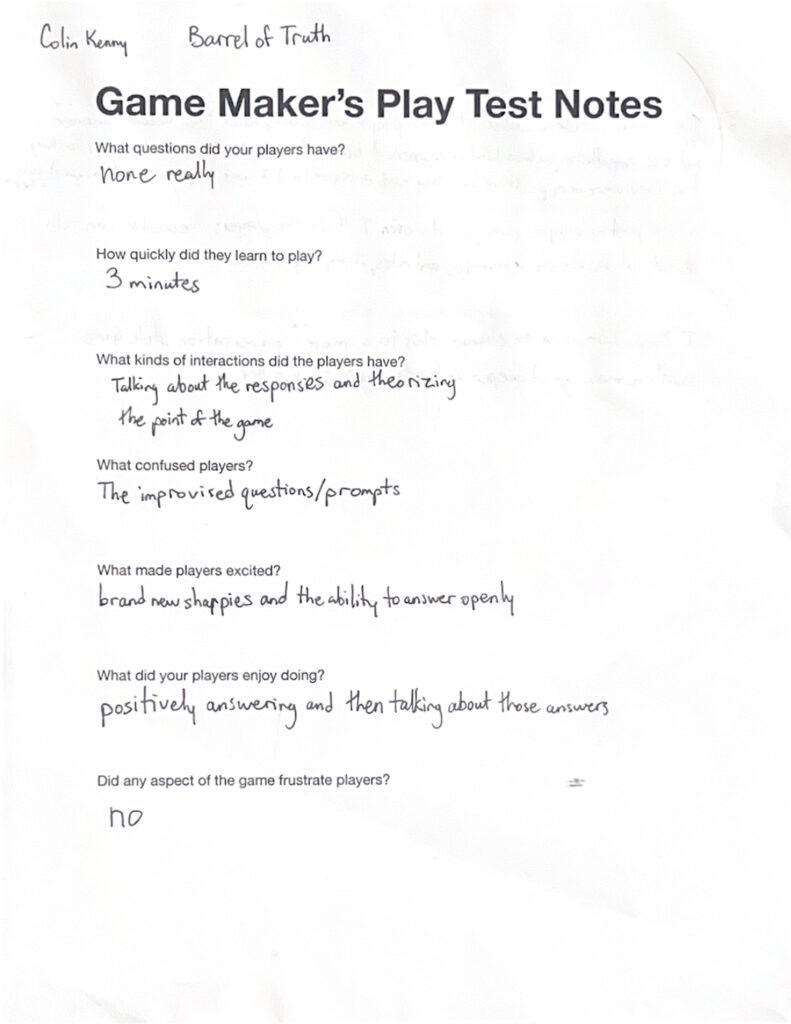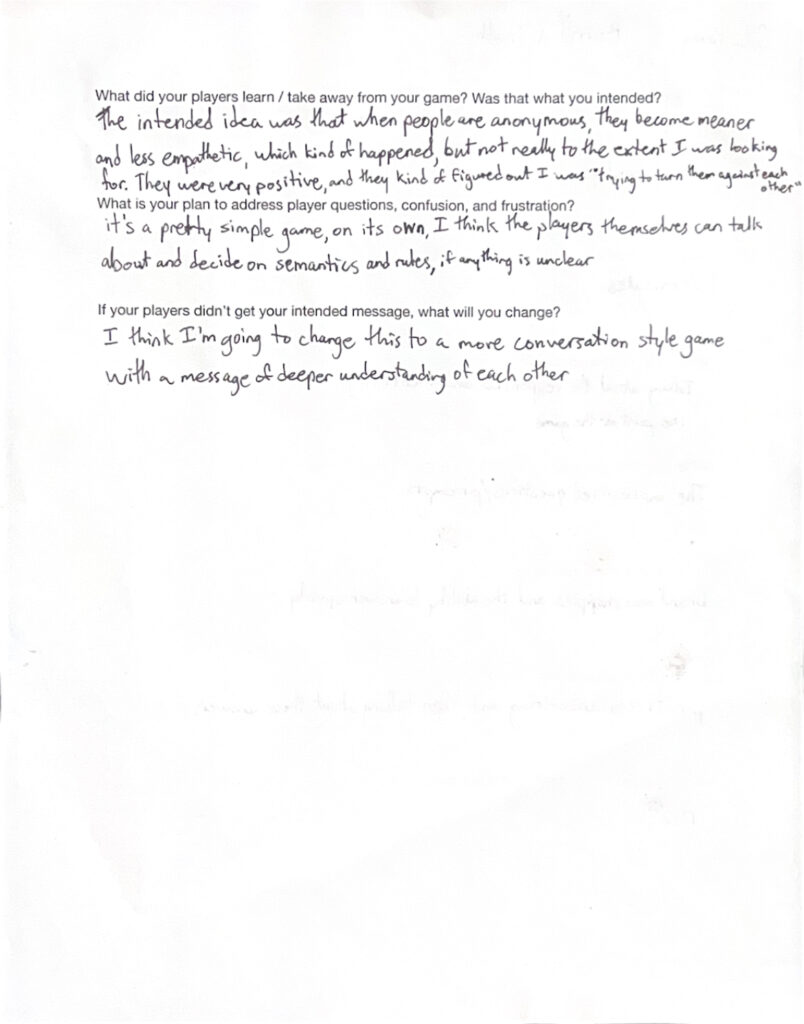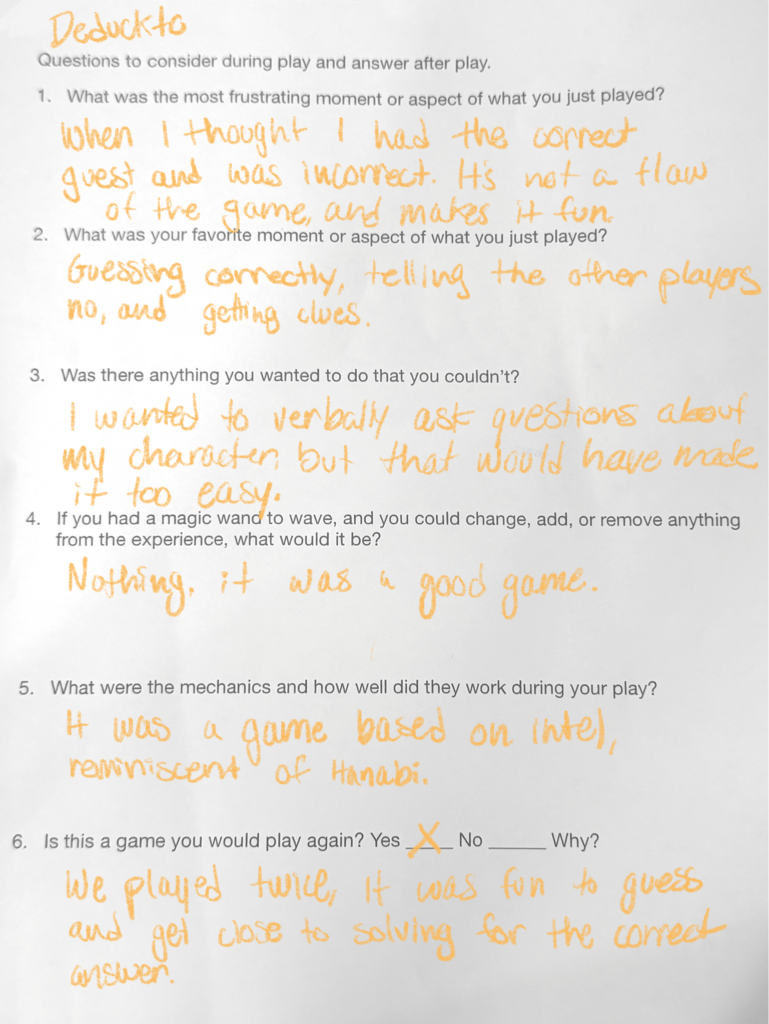
Playtest – Honey Heist
Wallstreet Warriors Documentation
Game Tester Notes of Help Our Guy: The Political Card Game – Colin Kenny
Atlas Arcade Final Documentation
Game Review of Kelsey’s Voting Game (I forgot the name.) – Colin Kenny
Game Review of Kelsey’s Butterfly Effect Game – Colin Kenny
Game Design Notes for Barrel of Truth Version 2 – Colin Kenny
Barrel of Truth Version 2 Rules -Colin Kenny
All players are given a pen and piece of paper per round. On their turn, players draw a card and read it aloud to the group, as well as its category, either public or anonymous. If public, all players write their names in the corner of their paper. If anonymous, players should only write their answers. Once everyone is finished, they drop their papers into the barrel, the card drawer closes the lid, shakes it well, then removes the lid and reads all of the responses. Then, players are encouraged to discuss and have meaningful conversations regarding the topic and responses. Play continues clockwise. Play ends when players feel they know each other much better.
Review of Evelyn’s “Around the World in 80 Days” -Colin Kenny
Rules for Barrel of Truth (Version 1)- Colin Kenny

Each player is given a Sharpie or any type of pen, but all of them must be identical. Each round, the host (me) hands each player a slip of paper and asks them to respond to a question or prompt pertaining to the other players. It can be in the form of an assumption, and opinion, a secret, etc. No direction is given whether the responses SHOULD be positive or negative. Some rounds will require players to write their own names on their slips along with their answers, other round they must be completely anonymous. After every player has answered, they will put their slip in the barrel, the barrel is closed and mixed, and each answer is read aloud by the host. The players are suggested to share thoughts and feelings of the responses. Once everyone is ready, the next round begins. The game ends whenever the players either hate each other or get bored.



